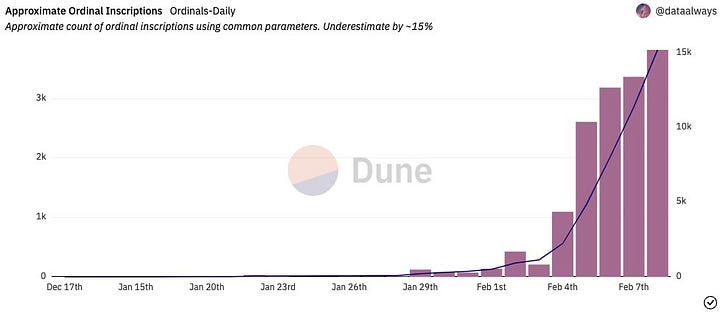
Bitcoin Ordinals appear to have taken the best of Web3 NFTs into the Bitcoin Blockchain ever since software programmer Casey Rodarmor unveiled the protocol on January 21.
In this article, we'll explore what Bitcoin ordinals are, how they work, and what makes them unique.
The Ordinals protocol allows NFTs to be stored on the Bitcoin blockchain. While Ethereum and Solana are the stable NFT names, this allows Bitcoin to join the NFT arena. The new Ordinals protocol enables Bitcoin node operators to carve each site with data, generating an Ordinal. This Bitcoin data may incorporate smart contracts, which in turn enables NFTs too.
So far, the most prominent Bitcoin Ordinal is Ordinal Punks, which consists of 100-pixel avatars that have been carved on Bitcoin via the Ordinals project.

Bitcoin Ordinals work by utilizing the Bitcoin blockchain's ledger system. The ledger is used to track the ownership and transfer of these unique assets, ensuring that they can't be duplicated or counterfeited. This is done by assigning a unique identifier to each Ordinal, which is then recorded on the blockchain.
Once the Ordinal is created and recorded on the blockchain, it becomes a permanent and unalterable part of the network. This ensures that the ownership and transfer of the ordinal can be tracked and verified, making it a secure way to store and trade unique assets.
One of the key things that makes Bitcoin Ordinals unique is their connection to the Bitcoin blockchain. The blockchain is a decentralized network that is maintained by a global network of computers. This ensures that the Ordinals are stored in a secure and transparent manner, making them resistant to tampering and fraud.
Ordinals are new and operate differently than traditional NFTs on other platforms (like as Ethereum and Solana), there is not much infrastructure in place to enable purchasing and selling the assets once they have been specified. In other words, there are currently no NFT marketplaces for Bitcoin Ordinals.

While both Bitcoin ordinals and Ethereum NFTs offer a secure way to store and trade unique digital assets, there are some key differences between the two. One of the biggest differences is the underlying technology. Ethereum NFTs are built on the Ethereum blockchain, which is a different technology than the Bitcoin blockchain.
Another difference is the way that ownership is tracked. While both systems use blockchain technology to track ownership, the Ethereum blockchain uses smart contracts to enforce the transfer of ownership, while the Bitcoin blockchain uses a ledger system.